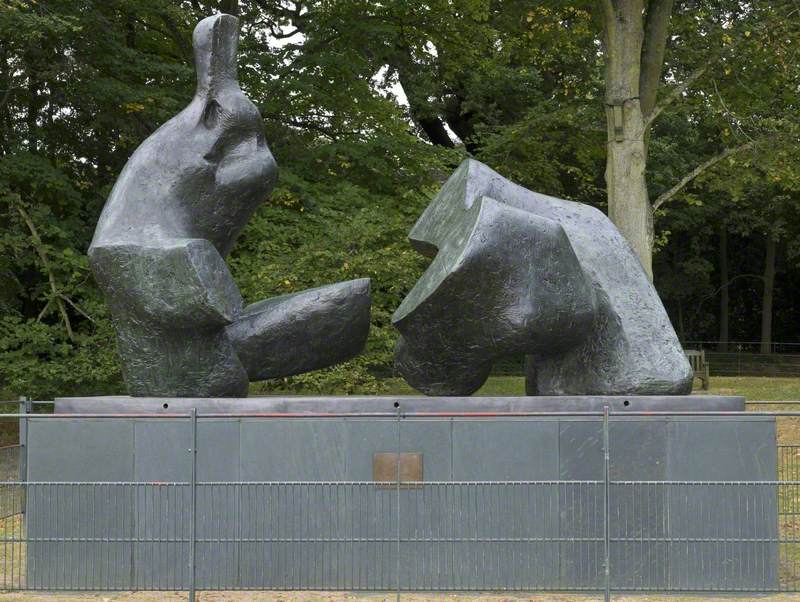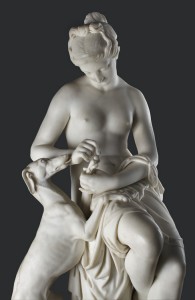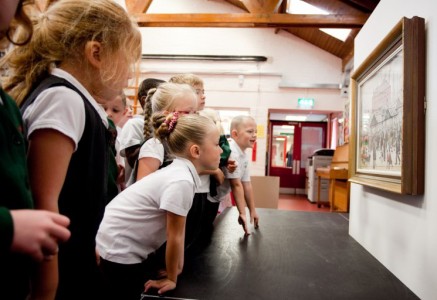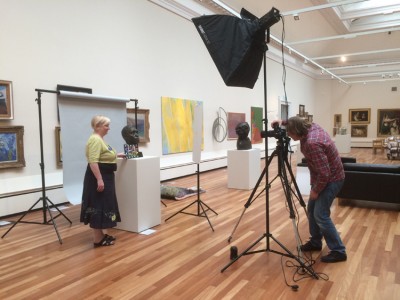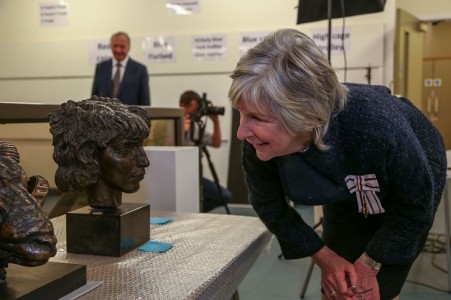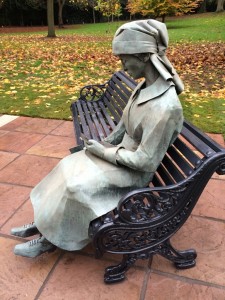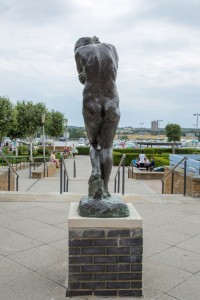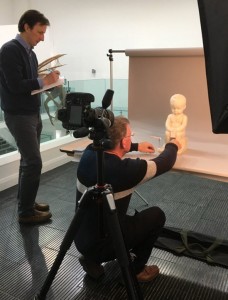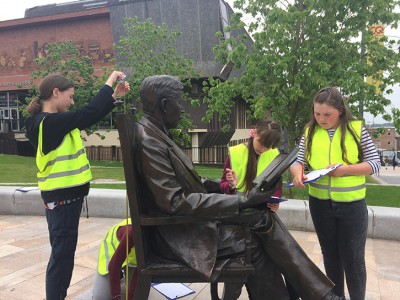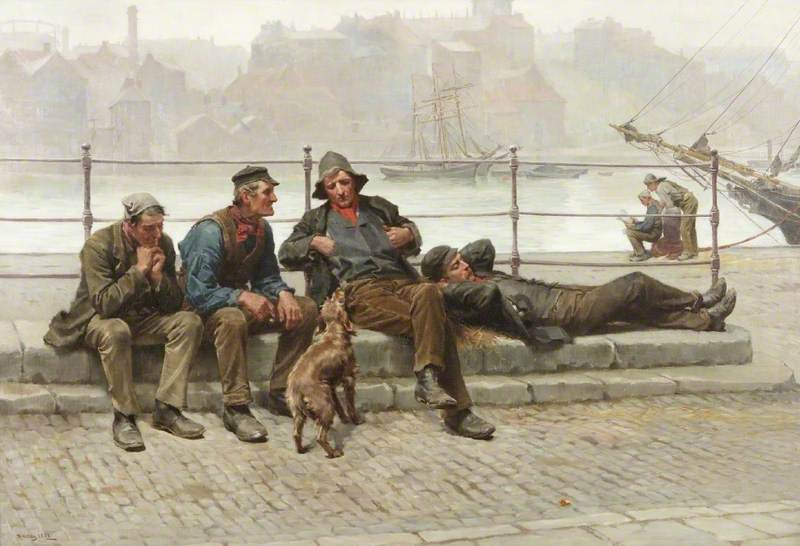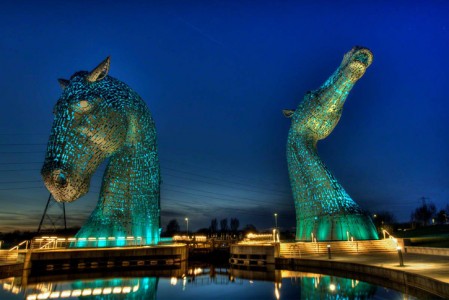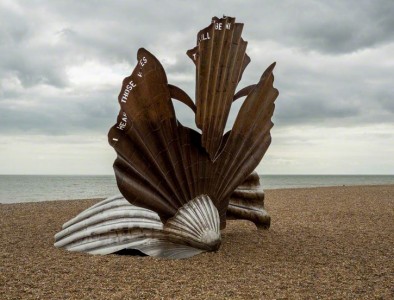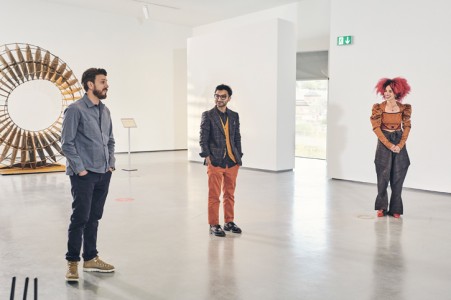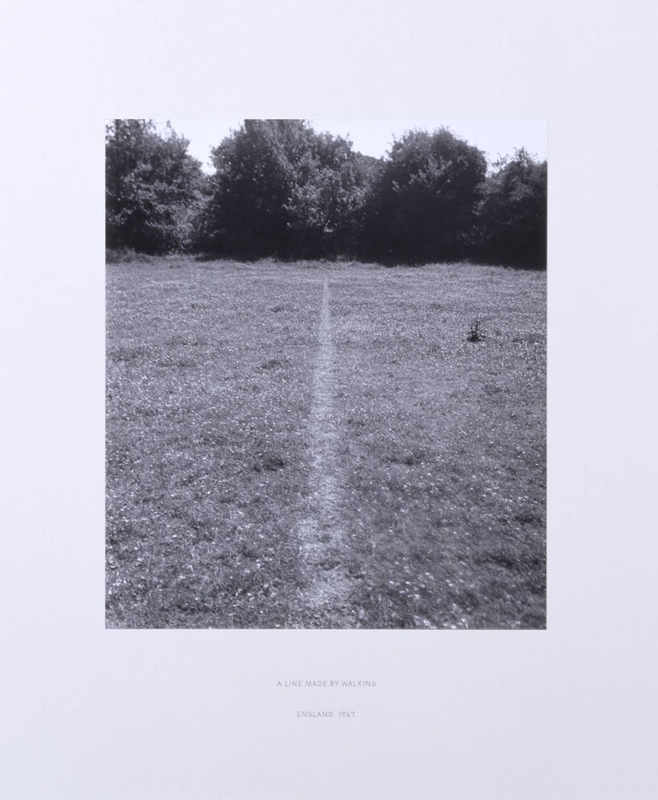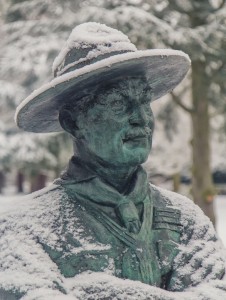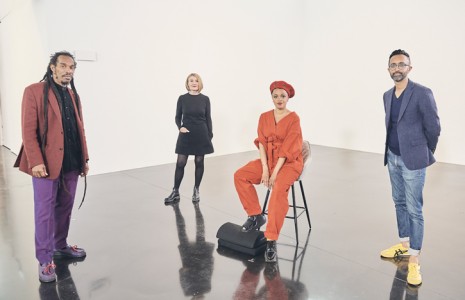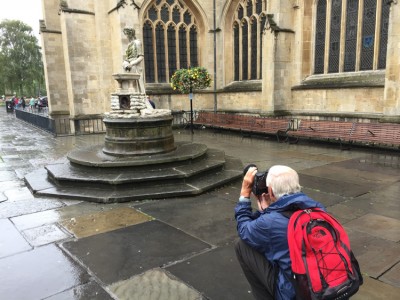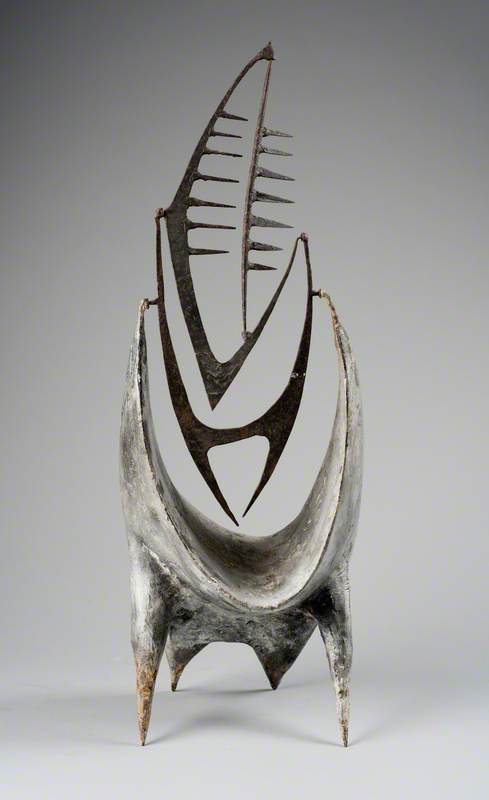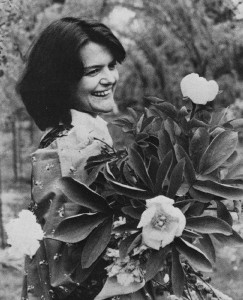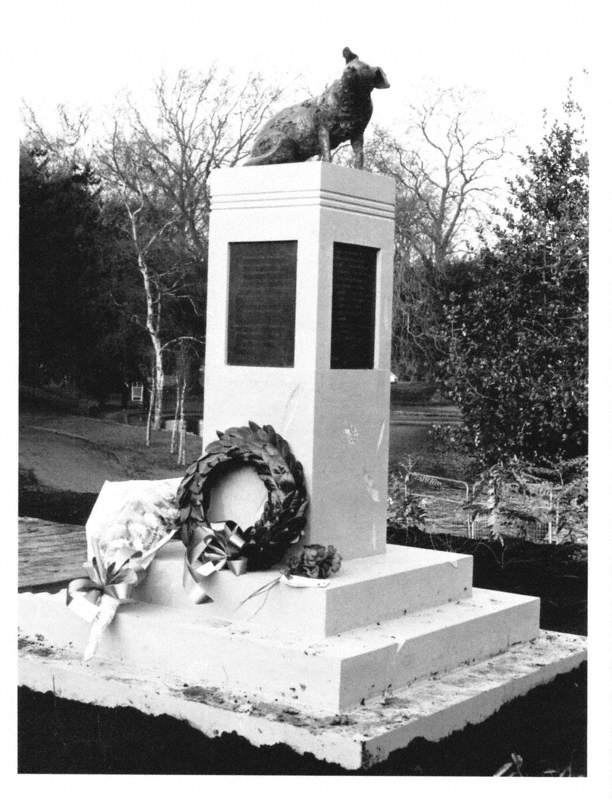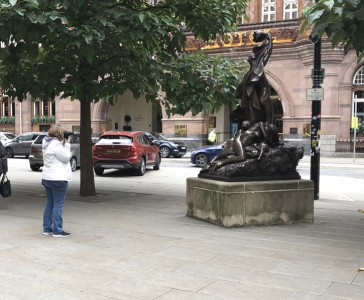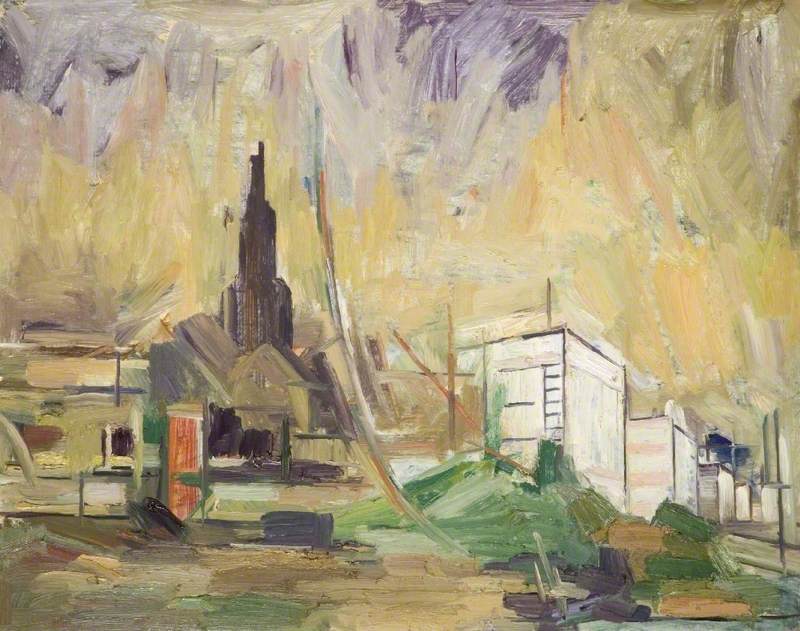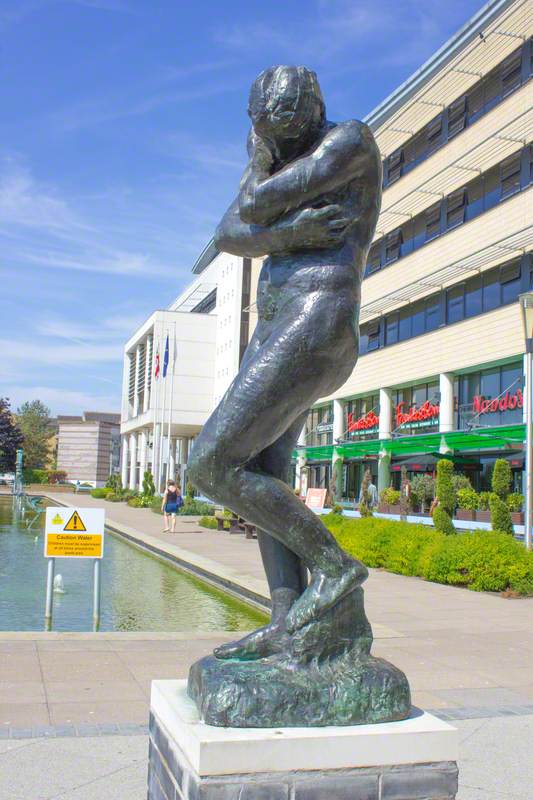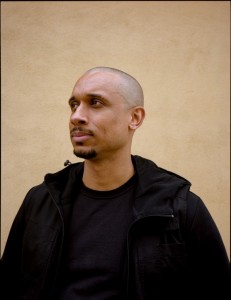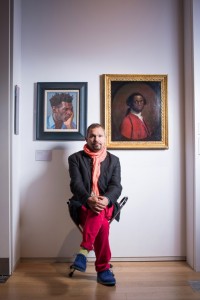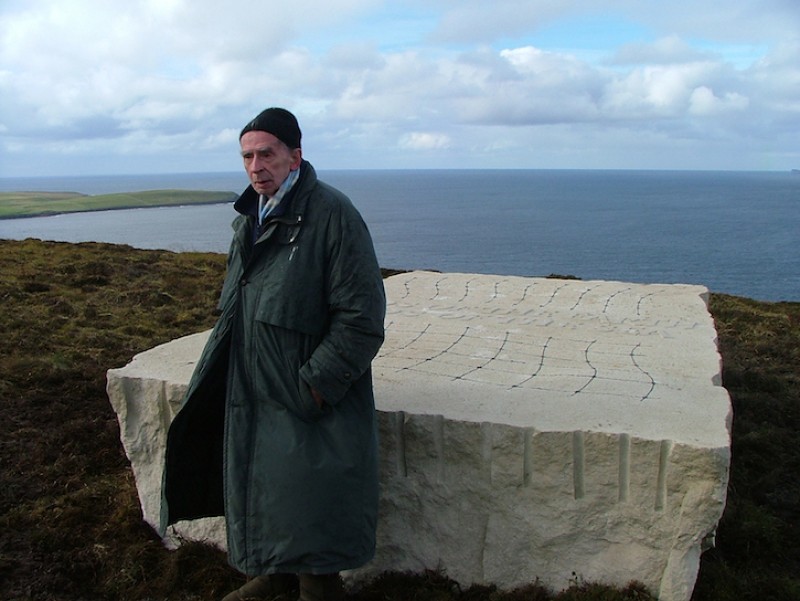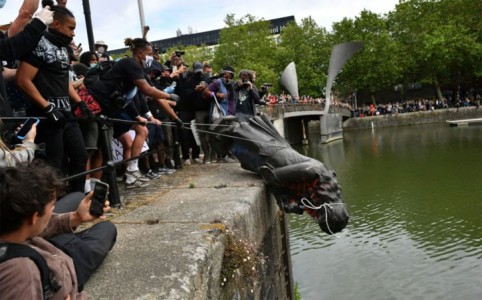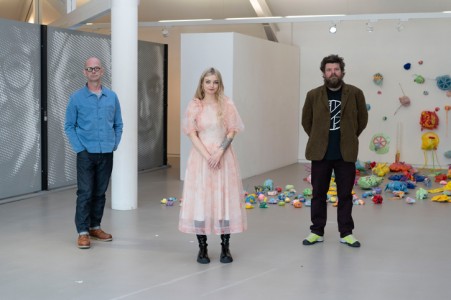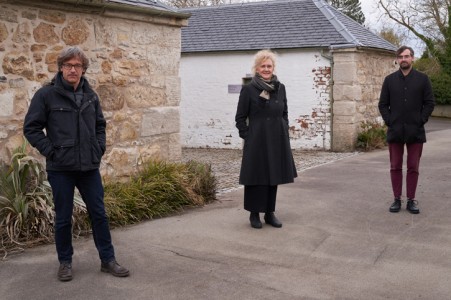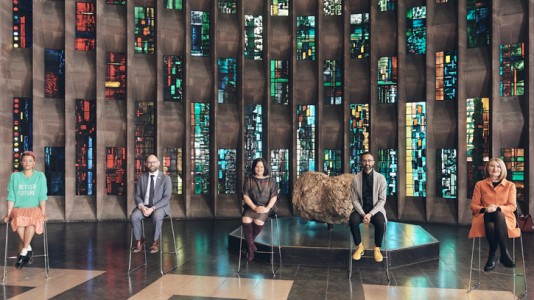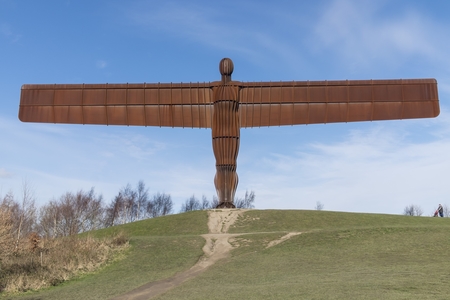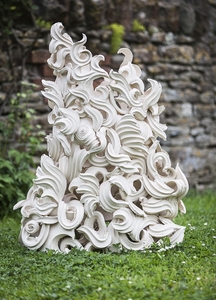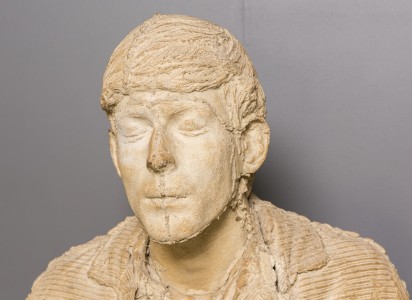Many of our Art UK volunteers have very interesting backgrounds. Anna Pepperall, a freelance Public Arts Consultant and one of our north of England sculpture project volunteers, was involved with the commissioning of The Angel of the North and writes here about the experience. The images are by one of our volunteer photographers, Simon Woodley.
The Angel of the North
1998, steel by Antony Gormley (b.1950) 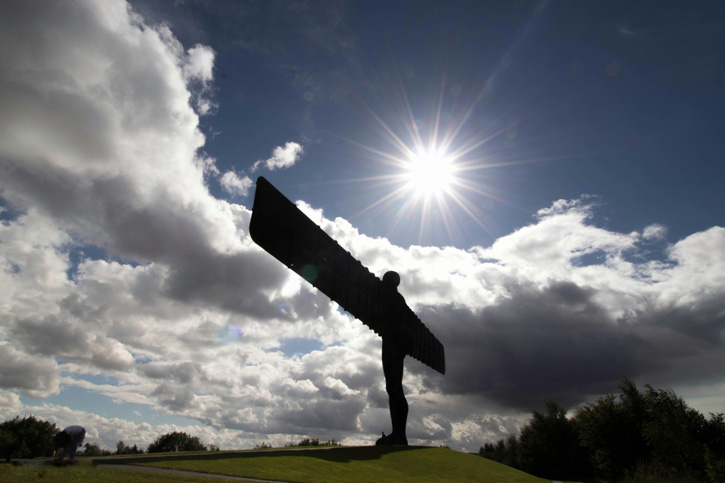
The Angel of the North, by leading sculptor Antony Gormley, recently celebrated 20 years on top of a windy mound in Gateshead. Built above a former mine, who would have thought that the media would still be talking about it with so much enthusiasm on this anniversary? The Angel was always ‘the story’, although not always such a friendly one. From the time when the initial sketch, hatched in heavy charcoal outline by Antony on the train to Gateshead, sparked media outrage, its evolution has made headlines and continues to do so.
As a young Arts Officer, contacting Antony was nerve-wracking, especially with his initial ‘I don’t do roundabout art’ reply.
Back in the late 1980s, Gateshead was struggling from post-industrial decline when the government awarded Garden Festivals, part of the cultural regeneration of areas of derelict land. Gateshead bid to host a Garden Festival and won. The toxic land that had once housed chemical works was remediated and spawned gardens and art which attracted thousands of visitors to the site.
‘Art in Public Places’ was also an initiative that Gateshead Council had already pursued, with works by sculptors such as Richard Deacon and Andy Goldsworthy placed along the riverside. But the idea to do a ‘landmark piece’, ‘the big one’, by an international sculptor was brave and ambitious. A shortlist of sculptors was compiled through telephone exchange – no international calls were allowed from the library portacabin where our offices were based!
As a young Arts Officer, contacting Antony was nerve-wracking, especially with his initial ‘I don’t do roundabout art’ reply. When eventually he saw the site, however, he became instantly attracted by its wide-open setting, the ability for the site to be seen by 90,000 cars a day and the emotional attachment to the history of the site. He said, ‘I will build an industrial angel’.
The sculpture's lengthy gestation was marred by press headlines over the design, which it was said ‘might cause accidents, lightning strikes and affect television reception’. The local ‘Stop the Statue’ campaign added to the complexity of raising funding when sponsors were not keen to be associated with negative press.
Keeping all this on track was the job of many people and being part of that team has been a major part of my arts career. Directly working with Antony was exciting and seeing the models evolve on my regular visits to the Peckham studio was, looking back, a definite high point, despite sometimes entering with dread when another hurdle had to be overcome!
The Angel of the North
1998, steel by Antony Gormley (b.1950) 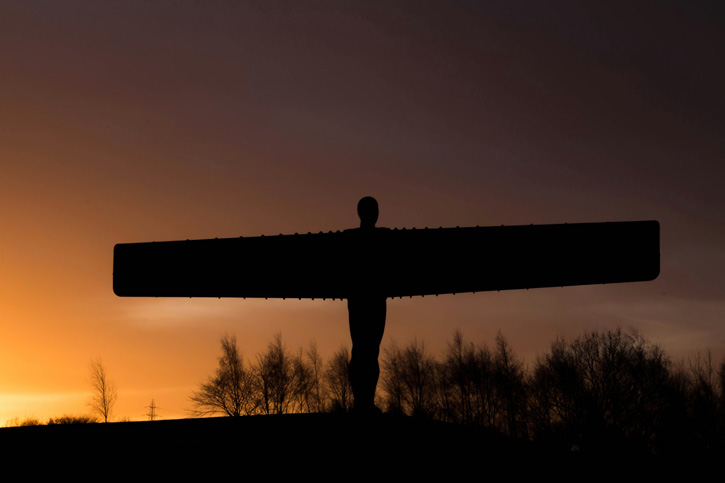
People’s views began to change when they saw how the Angel’s engineering connected to Tyneside’s industrial past. The sculpture was created by the skills of Ove Arup, working closely with Antony and a local fabrication company on Teesside. The making of the Angel created jobs in the area.
The sculpture was transported overnight from Hartlepool to Gateshead on a low loader, in an almost a religious ceremony. People at every roundabout along the way reached out to touch the head of the Angel. At dawn the body was lifted into place and the sculpture became an entity with a thousand people looking on.
Now television programmes use the Angel as part of their graphics. Corporate brochures and local businesses brand their publicity with photographs of the Angel and advertising campaigns choose to locate their product with images of the sculpture.
People are still coming and are keen to touch the Angel. Many have their own personal stories to tell, which is a great testament to its power as an artwork. People celebrate life events such as civil ceremonies and memorials under the Angel’s wings. They make a diversion off the A1, bringing friends and visitors to see it and want a part of it by stretching out their arms. Very rarely is no-one at the site.
The Angel of the North
1998, steel by Antony Gormley (b.1950) 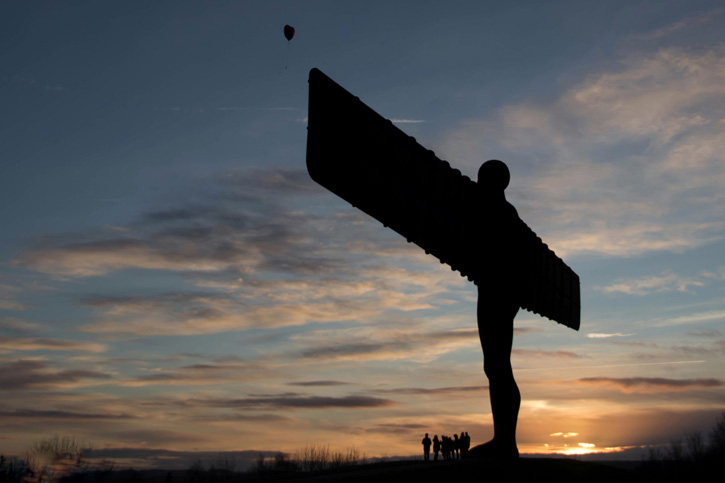
Simon Woodley took this photograph on the day of the anniversary of the sculpture. He says, ‘a family were there to remember a departed father and released a heart balloon. It was quite emotional and highlighted the significance of the sculpture’.
Anna Pepperall, Art UK Volunteer and former Visual Arts Manager for Gateshead Council

